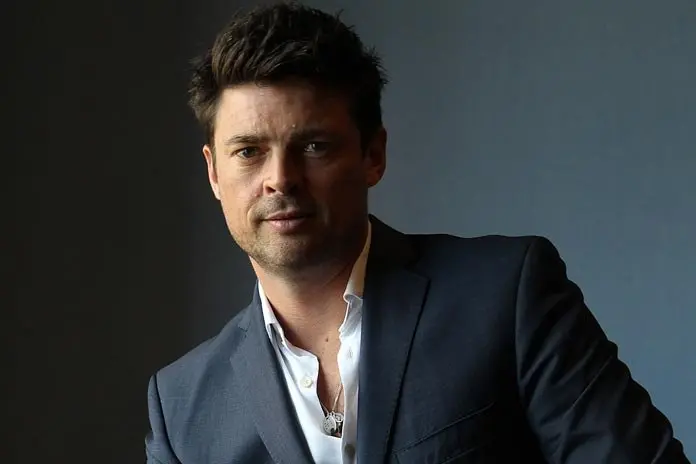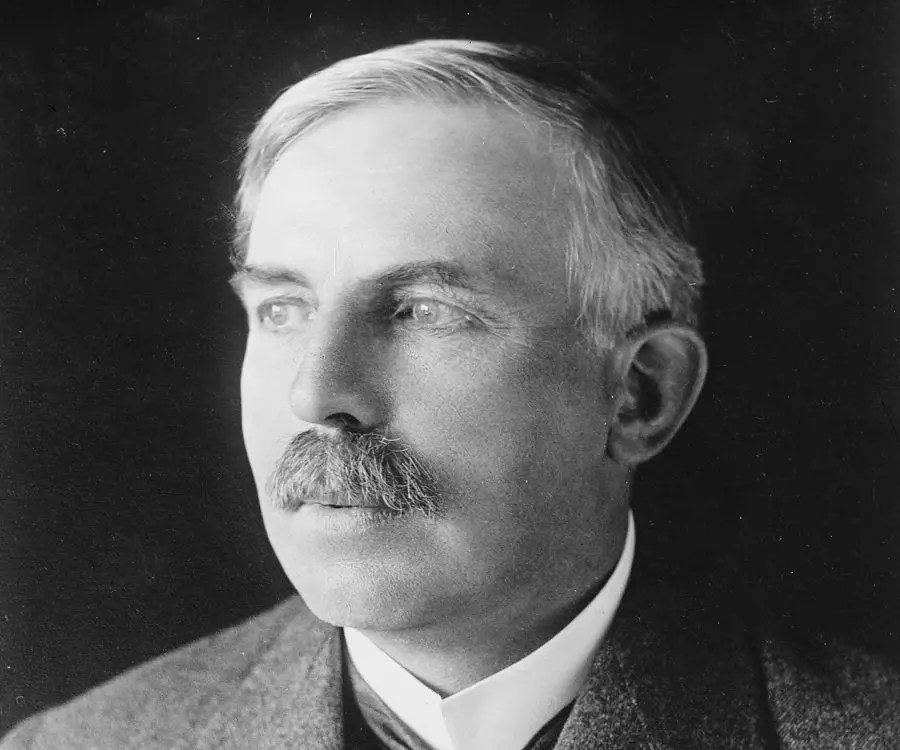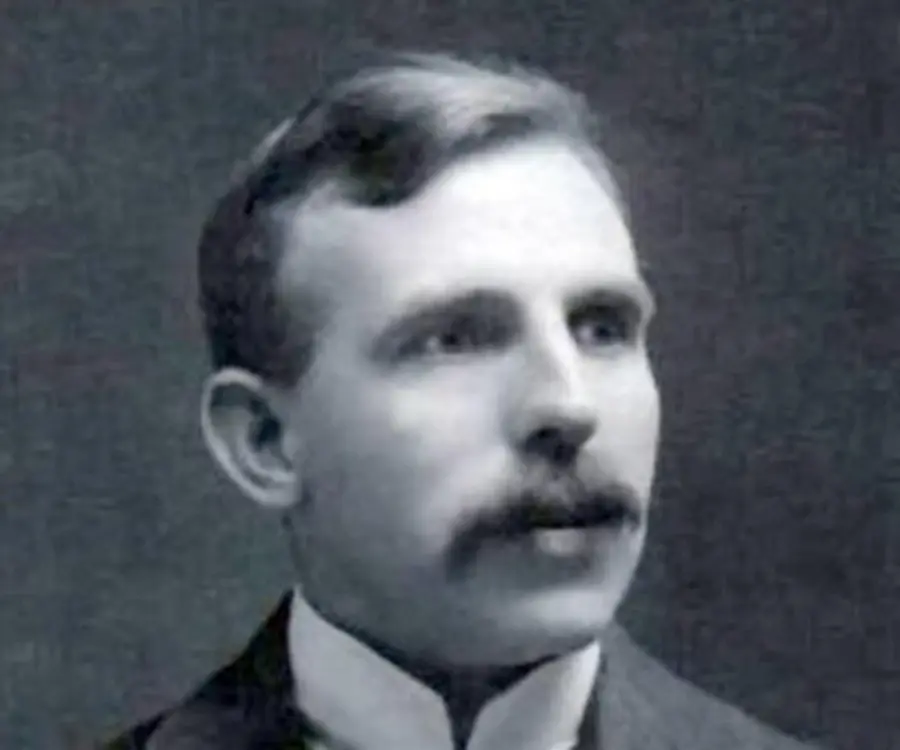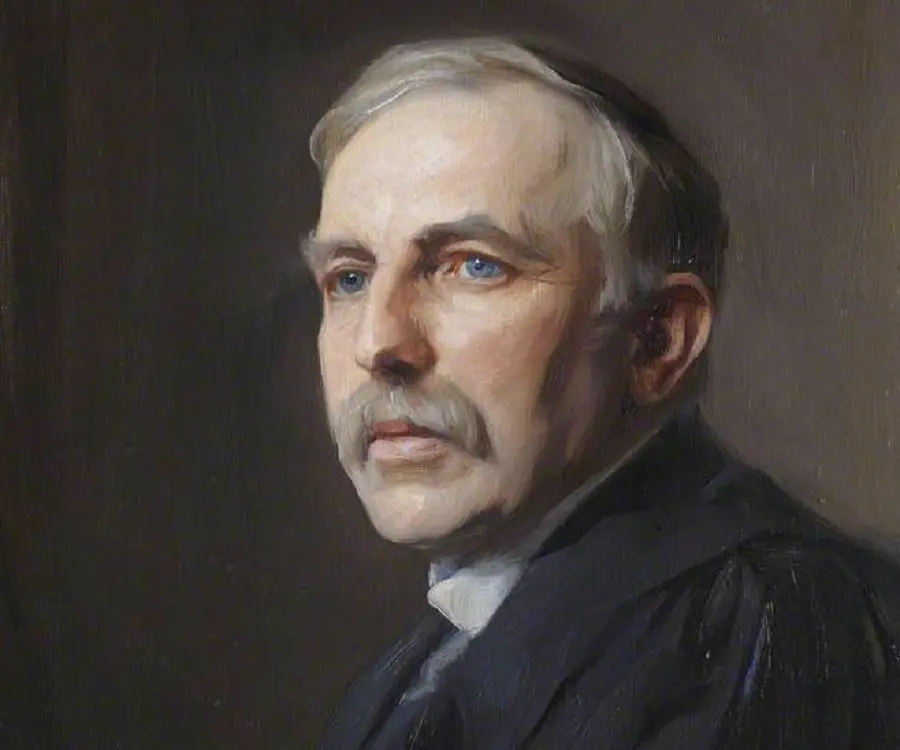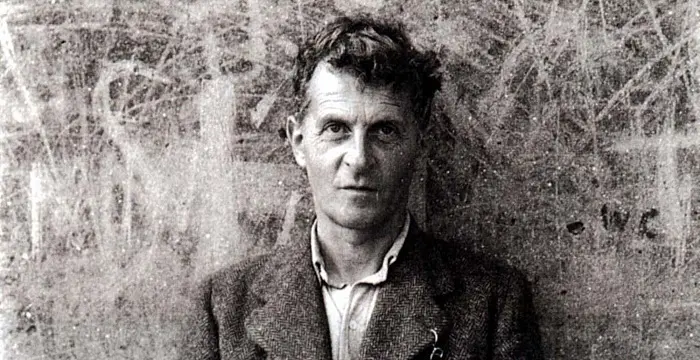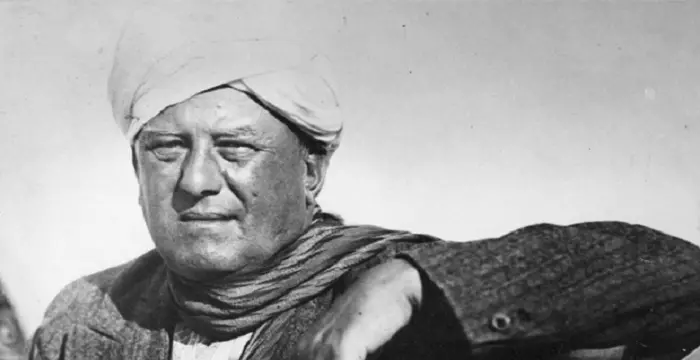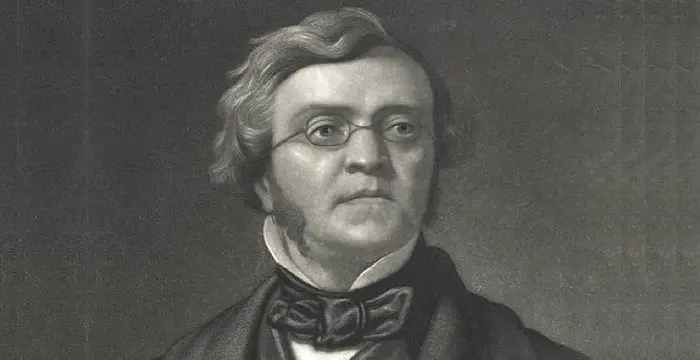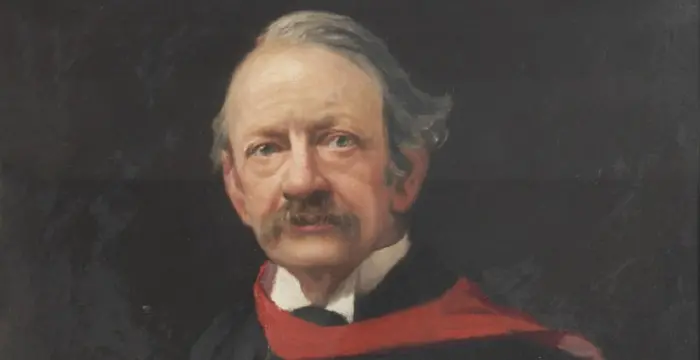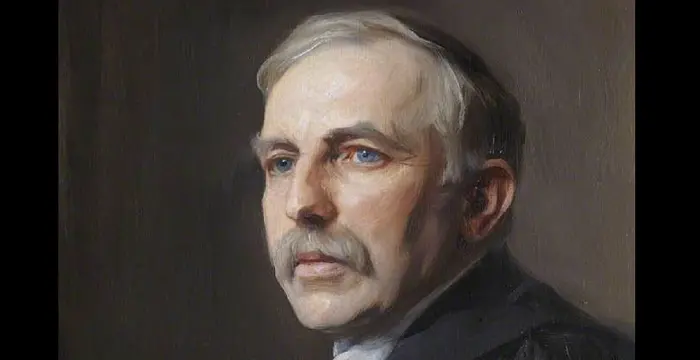
Ernest Rutherford - New Zealand Men, Birthday and Childhood
Ernest Rutherford's Personal Details
Ernest Rutherford was one of the greatest physicists, often regarded as the father of nuclear physics
| Information | Detail |
|---|---|
| Birthday | August 30, 1871 |
| Died on | October 19, 1937 |
| Nationality | British, New Zealander |
| Famous | Cambridge University, Trinity College, Cambridge, Scientists, Physicists, Chemists, New Zealand Men |
| Spouses | Mary Georgina Newton |
| Childrens | Eileen Mary |
| Universities |
|
| Notable Alumnis |
|
| Birth Place | Brightwater, New Zealand |
| Born Country | New Zealand |
| Gender | Male |
| Father | James Rutherford |
| Mother | Martha Thompson |
| Sun Sign | Virgo |
| Born in | Brightwater, New Zealand |
| Famous as | Physicist, Chemist |
| Died at Age | 66 |
// Famous New Zealand Men
Karl Urban
Karl Urban is a New Zealand actor, best known for his performance in ‘Star Trek’ and ‘The Lord of the Rings’ series. Check out this biography to know about his childhood, family life, achievements and fun facts about him.
Jonah Lomu
Jonah Lomu was a New Zealand rugby player. Check out this biography to know about his childhood, family life, achievements and fun facts about his life.
Rob Hall
Rob Hall was a legendary New Zealand mountaineer, who scaled Mt. Everest five times. Check out this biography to know about his childhood, family life, achievements and fun facts about him.
Ernest Rutherford's photo
Who is Ernest Rutherford?
Ernest Rutherford was a New Zealand physicist popularly known as the father of nuclear physics. He received the Nobel Prize in Chemistry in 1908 “for his investigations into the disintegration of the elements, and the chemistry of radioactive substances.” He established the fact that radioactivity involved the nuclear transformation of one chemical element to another. He also identified and named the Alpha and Beta radiations. He named the Gamma rays as well. The Rutherford model of the atom was introduced when he theorized that atoms have their charge concentrated in a very small nucleus. He conducted experiments that resulted in the first ‘splitting’ of the atom in 1917; during the process he discovered and named the proton. Under his supervision as the Director of the Cavendish Laboratory at the University of Cambridge, his associate James Chadwick proved his theorization of neutrons and soon after, the first experiment to split the nucleus in a fully controlled manner was conducted by his students, John Cockcroft and Ernest Walton. He was admitted to the Order of Merit in 1925, and was raised to the peerage as Lord Rutherford of Nelson in 1931. The chemical element 104 - Rutherfordium has been named after him.
// Famous Cambridge University
Stephen Fry
Stephen Fry is a comedian, actor, author, television and radio presenter. Read the biography and know all about his childhood, career, profile and timeline.
Ludwig Wittgenstein
Ludwig Wittgenstein is a renowned philosopher. Read on to know about the life, career, and works of the famous Austrian philosopher Ludwig Wittgenstein.
Rupert Brooke
Rupert Brooke was an English poet who is widely known for his poem ‘The Soldier’, which was a part of five war sonnets. This biography of Rupert Brooke provides detailed information about his childhood, life, achievements, works & timeline
Childhood & Early Life
Ernest Rutherford was born on 30 August 1871 at Spring Grove, New Zealand to James Rutherford, a Scottish emigrant farmer and Martha Thompson, an English emigrant schoolteacher. He was the fourth of a dozen children, and the second son.
He initially studied at Havelock School and at the age of 16, entered Nelson Collegiate School. Later in 1889, he won a University scholarship and joined Canterbury College, University of New Zealand, Wellington. He was a bright student and took interest in debates and rugby.
In 1893, he received a double first M.A. degree in Mathematics and Physical Science. Thereafter, he carried on his research work at the college for a brief period of time before receiving his B.Sc. degree in 1894.
In 1894, he also received an ‘1851 Research Fellowship’ from the ‘Royal Commission for the Exhibition of 1851’ that helped him to pursue post-graduate studies as a research scholar under J.J. Thomson at the Cavendish Laboratory, University of Cambridge.
Career
Under the supervision of J. J. Thomson at Cambridge, Ernest Rutherford invented a detector for electromagnetic waves. He managed to detect radio waves at half a mile; a ground-breaking achievement at that point of time. In 1897, he received his B.A. Research Degree and the Coutts-Trotter Studentship of Trinity College.
In 1898, he stated the presence of alpha and beta rays in uranium radiation and specified some of their characteristics. The same year, on Thomson’s reference, he was accepted for the position of Macdonald Professor of Physics at McGill University in Montreal, Canada. Two years later in 1900, he received a D.Sc degree from the University of New Zealand.
In 1907, he returned to England to become the Langworthy Professor of Physics at the University of Manchester. During World War I, he worked on a classified project of submarine detection by sonar.
In 1909, in collaboration with Hans Geiger and Ernest Marsden, Ernest Rutherford conducted the Geiger–Marsden experiment, which established the nuclear nature of atoms by deflecting alpha particles passing through a thin gold foil.
In 1919, he succeeded Sir Joseph Thomson as the Cavendish Professor of Physics at Cambridge. He also eventually became Chairman of the Advisory Council, H.M. Government, Department of Scientific and Industrial Research; Professor of Natural Philosophy, Royal Institution, London; and Director of the Royal Society Mond Laboratory, Cambridge.
In 1919, he also became the first person to transform one element into another. In the experiment, he used alpha radiation to convert nitrogen into oxygen. In the products of the reaction, he observed and brought forth a new particle called proton in 1920.
He also named the particle neutron during the Bakerian Lecture of 1920 and the following year, he theorized its existence in association with Niels Bohr. Years later in 1932, the theory was proved right by his associate James Chadwick, who received the Nobel Prize in Physics (1935) for this breakthrough.
Apart from Chadwick, he also guided other scientists like Blackett, Cockcroft and Walton to their Nobel Prize win; Nobel laureates like G.P. Thomson, Appleton, Powell, and Aston researched with him for some time.
In 1925, he urged the Government of New Zealand to support education and research; this resulted in the formation of the Department of Scientific and Industrial Research (DSIR) in 1926.
Between 1925 and 1930, he was the President of the Royal Society, and later President of the Academic Assistance Council which assisted nearly 1,000 university refugees from Germany.
Major Works
Ernest Rutherford is known as the father of nuclear physics. His own researches and work done by his associates and students under his supervision, established the nuclear structure of the atom and the characteristics of radioactive decay as a nuclear process.
While at Cambridge, he worked with J. J. Thomson on the conductive effects of X-rays on gases. This led to the discovery of the electron which Thomson presented to the world in 1897.
While exploring uranium’s radioactivity, he discovered two distinct types of radiations that differed from X-rays in their penetrating power. He named themAlpha ray and Beta ray in 1899.
In 1903, he considered a type of radiation discovered previously by a French chemist, Paul Villard. It had a much greater penetration power and he named it the Gamma ray. All three names of the radiations – Alpha, Beta, and Gamma are still in common use to this day.
In 1919, he became the first person to transform one element into another. This was achieved through an experimentation wherein alpha radiation was used to convert nitrogen into oxygen. As a result of the reaction, proton was discovered in 1920.
He published several successful books like ‘Radioactivity’ (1904); ‘Radioactive Transformations’ (1906); ‘Radiation from Radioactive Substances’, with James Chadwick and C.D. Ellis (1919, 1930); and ‘The Electrical Structure of Matter’ (1926).
Awards & Achievements
The Nobel Prize in Chemistry 1908 was awarded to Ernest Rutherford “for his investigations into the disintegration of the elements, and the chemistry of radioactive substances”.
He was knighted in 1914; in 1925, he was admitted to the Order of Merit and in 1931, he was raised to First Baron Rutherford of Nelson, New Zealand, and Cambridge.
He was elected Fellow of the Royal Society in 1903 and was its President from 1925 to 1930.
Amongst other honours, he received the Rumford Medal (1905), the Hector Memorial Medal (1916) and the Copley Medal (1922). He also received the Bressa Prize of the Turin Academy of Science (1910), the Albert Medal of the Royal Society of Arts (1928), the Faraday Medal of the Institution of Electrical Engineers (1930), and the T. K. Sidey Medal of the Royal Society of New Zealand (1933).
He received honorary doctorates from the Universities of Pennsylvania, Wisconsin, McGill, Birmingham, Edinburgh, Melbourne, Yale, Glasgow, Giessen, Copenhagen, Cambridge, Dublin, Durham, Oxford, Liverpool, Toronto, Bristol, Cape Town, London and Leeds.
Personal Life & Legacy
In 1900, Rutherford married Mary Georgina Newton, only daughter of Arthur and Mary de Renzy Newton. The couple had a daughter, Eileen Mary who married British physicist and astronomer, Ralph Fowler.
His favourite hobbies were golf and motoring.
He died after suffering from strangulated hernia on 19 October 1937, at the age of 66. He was interred at Westminster Abbey, near Isaac Newton and Lord Kelvin.
// Famous Scientists
Juliane Koepcke
Juliane Koepcke is a German-Peruvian biologist, who was the lone survivor among the 92 passengers and crew of the ill-fated LANSA Flight 508 that crashed in the Peruvian rainforest on 24 December 1971. Know more about her life in this biography.
Henry Cavendish
Henry Cavendish was a theoretical chemist and physicist, renowned for discovery of hydrogen and calculation of the mass of earth. To know more about his childhood, profile, timeline and career read on
Konstantin Tsiolkovsky
Konstantin Tsiolkovsky was a Russian rocket scientist and a pioneer of astronautics. This biography provides detailed information about his childhood, family, personal life, career, achievements, etc.
Ernest Rutherford's awards
| Year | Name | Award |
|---|---|---|
Other | ||
| 1913 | Matteucci Medal | |
| 1922 | Copley Medal | |
| 1924 | Franklin Medal | |
| 0 | ||
| 0 | 1905 - Rumford Medal | |
| 0 | 1908 - Nobel Prize in Chemistry | |
| 0 | 1910 - Elliott Cresson Medal | |
Ernest Rutherford biography timelines
- // 30th Aug 1871Ernest Rutherford was born on 30 August 1871 at Spring Grove, New Zealand to James Rutherford, a Scottish emigrant farmer and Martha Thompson, an English emigrant schoolteacher. He was the fourth of a dozen children, and the second son.
- // 1893In 1893, he received a double first M.A. degree in Mathematics and Physical Science. Thereafter, he carried on his research work at the college for a brief period of time before receiving his B.Sc. degree in 1894.
- // 1894In 1894, he also received an ‘1851 Research Fellowship’ from the ‘Royal Commission for the Exhibition of 1851’ that helped him to pursue post-graduate studies as a research scholar under J.J. Thomson at the Cavendish Laboratory, University of Cambridge.
- // 1897Under the supervision of J. J. Thomson at Cambridge, Ernest Rutherford invented a detector for electromagnetic waves. He managed to detect radio waves at half a mile; a ground-breaking achievement at that point of time. In 1897, he received his B.A. Research Degree and the Coutts-Trotter Studentship of Trinity College.
- // 1897While at Cambridge, he worked with J. J. Thomson on the conductive effects of X-rays on gases. This led to the discovery of the electron which Thomson presented to the world in 1897.
- // 1898In 1898, he stated the presence of alpha and beta rays in uranium radiation and specified some of their characteristics. The same year, on Thomson’s reference, he was accepted for the position of Macdonald Professor of Physics at McGill University in Montreal, Canada. Two years later in 1900, he received a D.Sc degree from the University of New Zealand.
- // 1899While exploring uranium’s radioactivity, he discovered two distinct types of radiations that differed from X-rays in their penetrating power. He named themAlpha ray and Beta ray in 1899.
- // 1900In 1900, Rutherford married Mary Georgina Newton, only daughter of Arthur and Mary de Renzy Newton. The couple had a daughter, Eileen Mary who married British physicist and astronomer, Ralph Fowler.
- // 1903In 1903, he considered a type of radiation discovered previously by a French chemist, Paul Villard. It had a much greater penetration power and he named it the Gamma ray. All three names of the radiations – Alpha, Beta, and Gamma are still in common use to this day.
- // 1904 To 1930He published several successful books like ‘Radioactivity’ (1904); ‘Radioactive Transformations’ (1906); ‘Radiation from Radioactive Substances’, with James Chadwick and C.D. Ellis (1919, 1930); and ‘The Electrical Structure of Matter’ (1926).
- // 1905 To 1933Amongst other honours, he received the Rumford Medal (1905), the Hector Memorial Medal (1916) and the Copley Medal (1922). He also received the Bressa Prize of the Turin Academy of Science (1910), the Albert Medal of the Royal Society of Arts (1928), the Faraday Medal of the Institution of Electrical Engineers (1930), and the T. K. Sidey Medal of the Royal Society of New Zealand (1933).
- // 1907In 1907, he returned to England to become the Langworthy Professor of Physics at the University of Manchester. During World War I, he worked on a classified project of submarine detection by sonar.
- // 1908The Nobel Prize in Chemistry 1908 was awarded to Ernest Rutherford “for his investigations into the disintegration of the elements, and the chemistry of radioactive substances”.
- // 1909In 1909, in collaboration with Hans Geiger and Ernest Marsden, Ernest Rutherford conducted the Geiger–Marsden experiment, which established the nuclear nature of atoms by deflecting alpha particles passing through a thin gold foil.
- // 1914 To 1925He was knighted in 1914; in 1925, he was admitted to the Order of Merit and in 1931, he was raised to First Baron Rutherford of Nelson, New Zealand, and Cambridge.
- // 1919In 1919, he succeeded Sir Joseph Thomson as the Cavendish Professor of Physics at Cambridge. He also eventually became Chairman of the Advisory Council, H.M. Government, Department of Scientific and Industrial Research; Professor of Natural Philosophy, Royal Institution, London; and Director of the Royal Society Mond Laboratory, Cambridge.
- // 1919 To 1920In 1919, he also became the first person to transform one element into another. In the experiment, he used alpha radiation to convert nitrogen into oxygen. In the products of the reaction, he observed and brought forth a new particle called proton in 1920.
- // 1919 To 1920In 1919, he became the first person to transform one element into another. This was achieved through an experimentation wherein alpha radiation was used to convert nitrogen into oxygen. As a result of the reaction, proton was discovered in 1920.
- // 1920 To 1935He also named the particle neutron during the Bakerian Lecture of 1920 and the following year, he theorized its existence in association with Niels Bohr. Years later in 1932, the theory was proved right by his associate James Chadwick, who received the Nobel Prize in Physics (1935) for this breakthrough.
- // 1925In 1925, he urged the Government of New Zealand to support education and research; this resulted in the formation of the Department of Scientific and Industrial Research (DSIR) in 1926.
- // 1925 To 1930Between 1925 and 1930, he was the President of the Royal Society, and later President of the Academic Assistance Council which assisted nearly 1,000 university refugees from Germany.
- // 1925 To 1930He was elected Fellow of the Royal Society in 1903 and was its President from 1925 to 1930.
- // 19th Oct 1937He died after suffering from strangulated hernia on 19 October 1937, at the age of 66. He was interred at Westminster Abbey, near Isaac Newton and Lord Kelvin.
// Famous Trinity College, Cambridge
Isaac Newton
Isaac Newton was an English scientist and mathematician, who discovered gravitation and Newtonian Mechanics. Read this biography to find more on his life.
Aleister Crowley
Aleister Crowley was an occultist and ceremonial magician who founded the ethical philosophy of Thelema. This biography of Aleister Crowley provides detailed information about his childhood, life, achievements, works & timeline.
William Makepeace Thackeray
William Thackeray was an English novelist and satirist. Read this brief biography to find more on his life & timeline.
Srinivasa Ramanujan
Srinivasa Ramanujan was an Indian mathematician who made significant contributions to mathematical analysis, number theory, and continued fractions. Check out this biography to know about his childhood, life, achievements, works & timeline. .
Jared Diamond
Jared Mason Diamond is an American scientist and author reputed for his highly acclaimed and popular science books.
J. J. Thomson
J.J. Thomson was an English physicist and mathematician. This biography profiles his childhood, life, academic career, research and timeline.
Ernest Rutherford's FAQ
What is Ernest Rutherford birthday?
Ernest Rutherford was born at 1871-08-30
When was Ernest Rutherford died?
Ernest Rutherford was died at 1937-10-19
Where was Ernest Rutherford died?
Ernest Rutherford was died in Cambridge, England
Which age was Ernest Rutherford died?
Ernest Rutherford was died at age 66
Where is Ernest Rutherford's birth place?
Ernest Rutherford was born in Brightwater, New Zealand
What is Ernest Rutherford nationalities?
Ernest Rutherford's nationalities is British, New Zealander
Who is Ernest Rutherford spouses?
Ernest Rutherford's spouses is Mary Georgina Newton
Who is Ernest Rutherford childrens?
Ernest Rutherford's childrens is Eileen Mary
What was Ernest Rutherford universities?
Ernest Rutherford studied at Cambridge University,Trinity College, Cambridge, University of Cambridge (1895–1898), University of New Zealand, Trinity College, Cambridge, University of Canterbury, Nelson College
What was Ernest Rutherford notable alumnis?
Ernest Rutherford's notable alumnis is Cambridge University, Trinity College, Cambridge
Who is Ernest Rutherford's father?
Ernest Rutherford's father is James Rutherford
Who is Ernest Rutherford's mother?
Ernest Rutherford's mother is Martha Thompson
What is Ernest Rutherford's sun sign?
Ernest Rutherford is Virgo
How famous is Ernest Rutherford?
Ernest Rutherford is famouse as Physicist, Chemist
